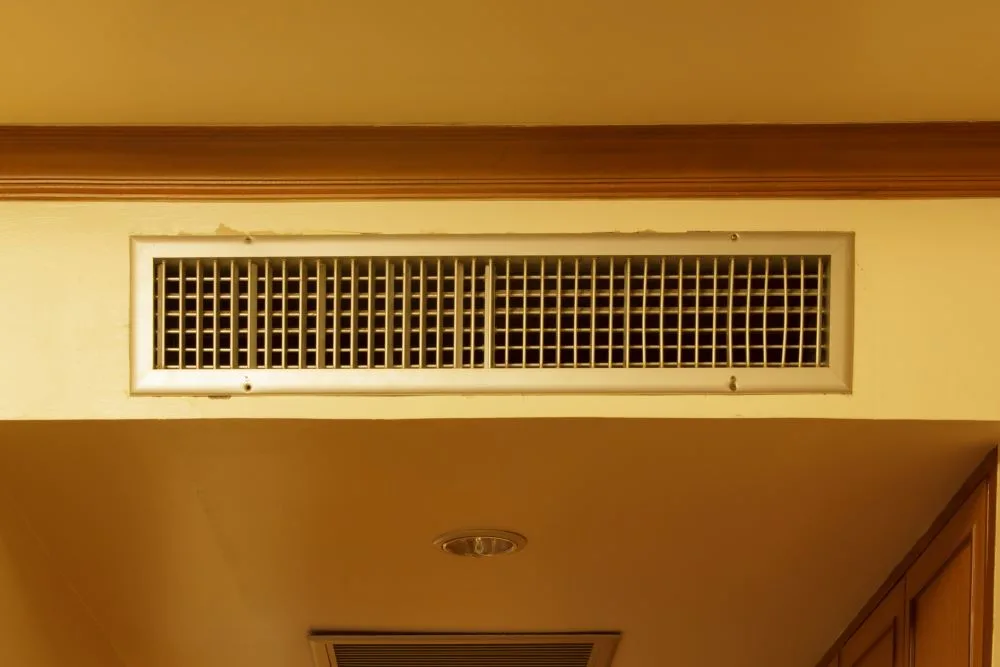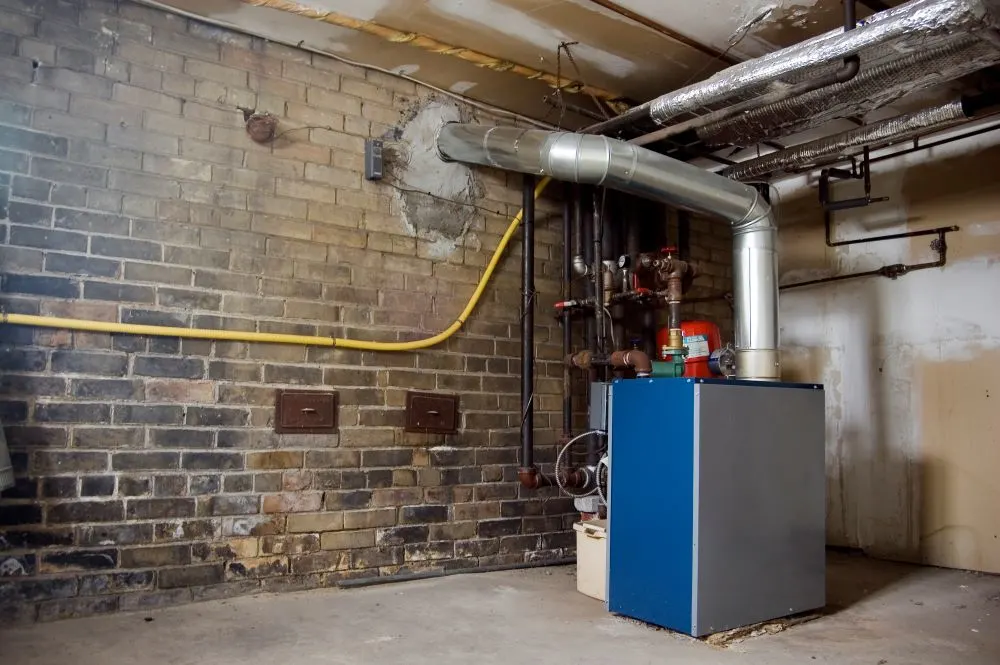When winter comes sweeping in, so do drastic changes in the weather. It makes sense to wonder if the change in season means you have to make adjustments to your vents in order to keep your home’s interior healthy. After all, two of the biggest factors to consider are temperature and humidity, which are managed by your ventilation system.
Your basement is generally cooler and moister than the rest of your house, making it a focus when considering how to keep the air in your home regulated. This article will explain what adjustments to make to your vents to keep your basement’s air well managed. We’ll also be taking a look at why the room might be feeling too hot or cold despite being well ventilated, and how to fix the problem.

External basement vents should be closed to shut off the direct influence of outside temperatures. Supply and return vents should remain open. Closing them creates pressure imbalances in the home and HVAC system, resulting in unwanted air movement and making the HVAC system to work harder to heat the house.
Close External Vents
During the cold season, it’s extremely important to make sure that you shut any external vents, which are the vents leading directly outdoors. If they are left open, then cold, unconditioned air will be free to flow into your home.
Cold air likes to sink, so it will mostly stay in your basement once let in through the external vents. However, it can still contribute to making your basement and ground-level floors feel chilly and uncomfortable to walk on, and your house feeling cooler and drafty. Additionally, the influx of cold air will drive up your heating costs by increasing the work your furnace puts into warming your home.
With that said, you should ensure that the basement has enough ventilation even with the external vents shut. As basements tend to be moister than the rest of the home, the need for effective air circulation is increased due to the higher risk of mold, the fact that humidity can contribute to colder basement temps, and the effects of damp on the upstairs parts of the home.
Open Basement Supply and Return Vents
Many basements have supply and return vents. If this is true for yours, then it’s likely linked to your whole-house HVAC system. This makes it extremely important to look at the room in conjunction with the rest of your house, not as an isolated space.

Keeping a Basement Warm in Winter
If you’re having trouble keeping your basement from feeling chilly in the winter, there are steps you can take to shoo out the cold.
One of the easiest ways to warm things up is to leave all the supply and return vents in your basement open to balance out its pressure levels with the rest of the house. After ensuring all your supply and return vents are open, you should also make sure that none of your furniture is blocking a vent and preventing the air from flowing freely.
Your supply vents “supply” the room with conditioned air from your HVAC system. Your return vents “return” air from the room to the HVAC system to be heated or cooled again. If all your supply vents are open but not your return vents, your basement will have positive pressure. If your return vents are open but not your supply vents, the loss of air will create a negative pressure in your basement. These are both pressure imbalances.
It’s important to prevent a pressure imbalance because air travels from high-pressure areas to low-pressure areas in an attempt to level itself out. It will do this by forcing its way through small cracks in the walls, doors, windows, and even into different parts of your HVAC system.
Stop Basement Becoming Too Hot in Winter
Excessive heat is unusual for a basement, which is generally a cooler temperature than the rest of the house. You might think to just shut the supply vents to keep warm air from flowing in, but this is not the best course of action. The warm temperatures likely indicate a deeper issue; in this case, you’re probably dealing with a leaky furnace allowing hot air to escape into the basement.
It would be best to address the problem directly by having the furnace inspected instead of shutting any vents. If you have your furnace looked at and it turns out there is no issue, that’s great! But what are you to do about your basement being too hot?
It would be helpful to look at your furnace dampers next, which help to regulate the furnace system by controlling the airflow. Adjusting your furnace dampers to lessen the flow of warm air into the basement should lower the temperature without disrupting the air pressure like closing the supply vents would.
Exception
If your furnace is working just fine and your basement is still too warm even after adjusting the dampers, then it is possible that your basement’s return vents are removing too much cold air while the supply vents continue to add heat.
In this scenario, it’s perfectly acceptable to close a few of the vents to keep your basement from feeling like a fiery pit, but this is an exception and should only be done after covering all your other bases. It should also be viewed as a temporary solution until you can get an HVAC contractor in to have a look at your system.
Because it’s so easy to create a pressure imbalance in your house, be sure to exercise caution when choosing what vents to close. If you end up altering the balance of the room or house, you can cause another problem. It is actually often better to only partially close the vents.
Prevent Heat Loss Into Basement
Since basements are naturally colder than the rest of the house, it’s easy for them to guzzle up heat. However, this does not have to be the case, and once again I want to emphasize the importance of balancing the pressure in your home!
When your basement pressure is balanced, physics works together with your whole-house HVAC system to prevent unnecessary loss of heat. Furthermore, shutting the basement vents is like clogging an artery and your furnace blower will have to work harder to get warm air to other portions of your house.

However, your basement may not even have any supply and return vents. This means it’s probably not actually linked up with your home’s HVAC system and is ventilated separately. If that’s the case, the basement likely isn’t heated either. Keeping the door closed is one small solution that can help to prevent the temperature of the air in your basement from interacting with the air in the rest of your home.
Sources
https://basc.pnnl.gov/information/pressure-balancing-supply-and-return-ducts-existing-homes
https://www.basementsystems.ca/basement/waterproofing/problems/vents.html
https://buckeyeheat.com/knowledge-center/top-reasons-why-your-basement-is-cold
/https://www.hunker.com/12000221/what-is-a-damper-on-a-furnace
/https://precisioncomfort.com/2017/12/05/my-finished-basement-is-cold/
https://yellowbluetech.com/2019/04/10/clearing-home-negative-air-pressure/
